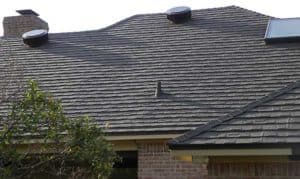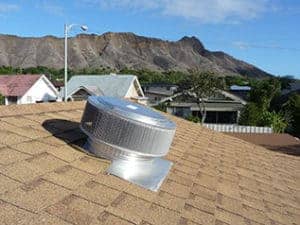This Aura Gravity Roof Ventilator is 48 inches in diameter. A Roof Vent of this size is for commercial or industrial applications. It is shown here with a curb mount flange to go on top of roof curbs.
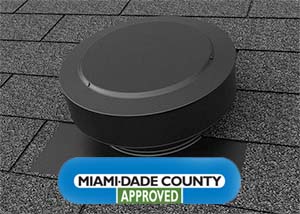
AVP's Round Back Static Vent is an exhaust roof vent for steep slope roofs, and is Miami-Dade County Approved. When these roof vents are on the upper part of the roof, they will exhaust air from the attic for proper roof ventilation.[More...]
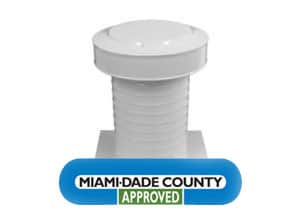
The Miami-Dade County Approved Keepa Attic Vent is built for Flat Roof Ventilation. This roof vent can be an exhaust vent or as an intake vent for ventilating attics and or plenums.[More...]
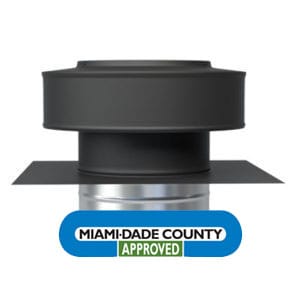
The Round Back Roof Jack vent cap is for ventilating bathroom fans, range hoods when attached to the duct. This product is Miami-Dade County Approved! Its round aerodynamic design withstands wind pressure over 200mph..[More...]
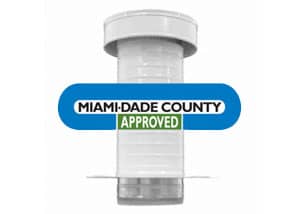
The Keepa Roof Jack is Miami-Dade County Approved, and ideal for ventilating bathroom fans, rangehoods or whenever ventilating a duct out the roof. The tall collar height allows for flat roof ventilation in all climate zones.[More...]
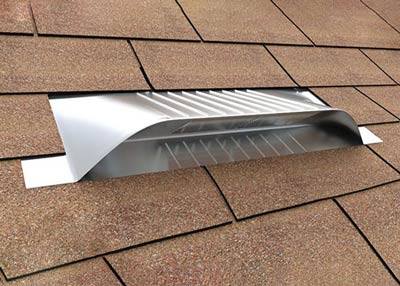
The Universal Vent is an off ridge roof vent that can be used for air exhaust or air intake. This roof vent should be installed on roofs with a pitch of 3/12 or greater. [More...]
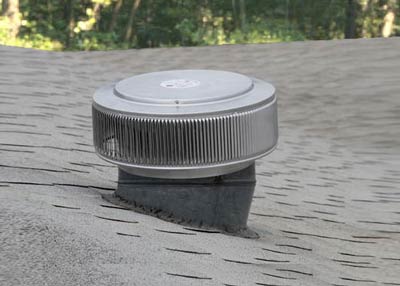
This Gravity Roof Vent is a perfect replacement for "Whirlybirds" Roof Turbines. The Aura Gravity Vent Retrofit does not need to spin in order to provide excellent ventilation. [More...]
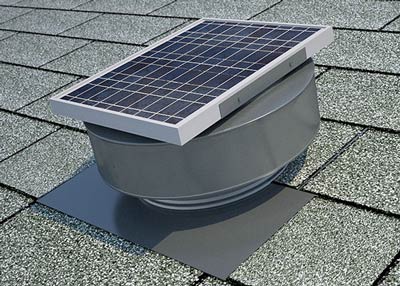
The Round Back Solar Fan is an exhaust fan that runs on bright direct sunlight and will still vent passively during dark cloudy days and evenings.[More...]
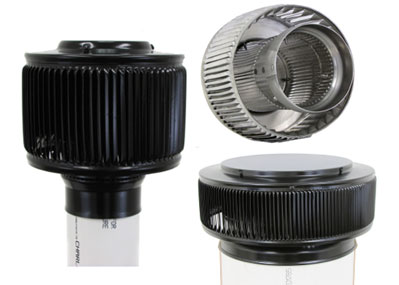
The Aura PVC Vent Cap is perfect for ventilating vapors and particles from the PVC pipe. This Vent Cap can be for both commercial and residential applications. [More...]
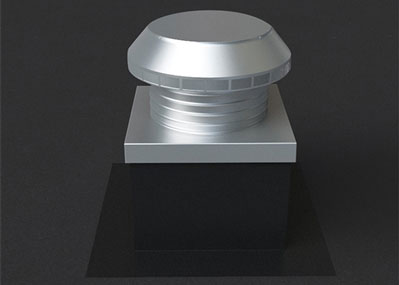
This Air Intake Pop Vent is ideal for maintaining proper attic ventilation. AVP's line of intake roof vents allows for exhaust vents to work efficiently by bringing in fresh air. [More...]
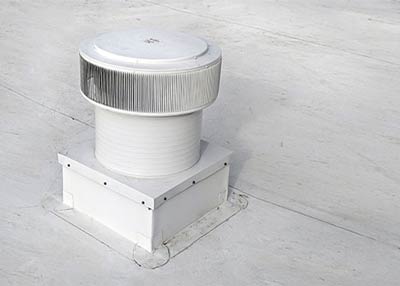
The Aura Gravity Vent with Curb Mount Flange will fit onto Roof Curbs. Roof vents that have curb mount flanges can be used as a hatch if maintenance is needed on a flat roof.[More...]
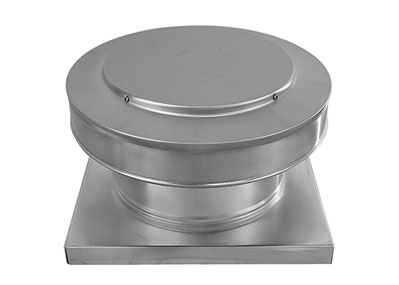
AVP's Round Back Static Vent with Curb Mount Flange is meant to be installed on Roof Curbs. In addition, it works as both an exhaust roof vent and as an air intake roof vent.[More...]
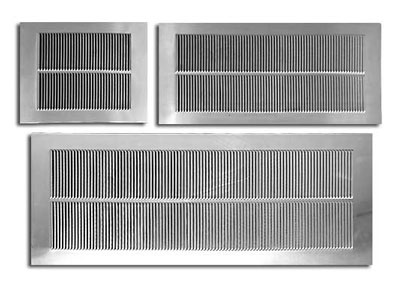
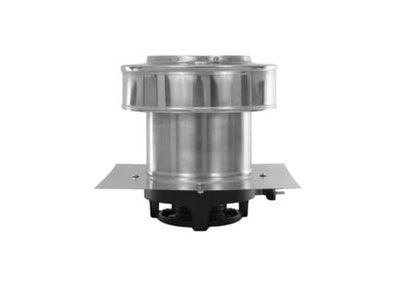
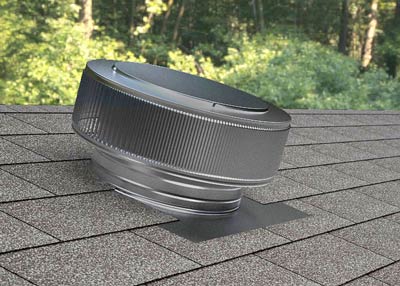
The Aura Gravity Vent is an exhaust vent that removes heat from the attic in the summer and moisture from the attic in the winter. It functions just like a spinning roof turbine but without moving parts.[More...]
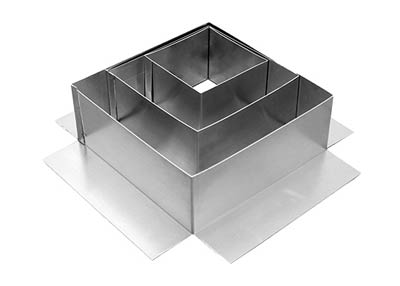
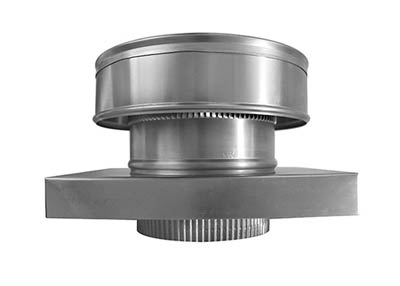
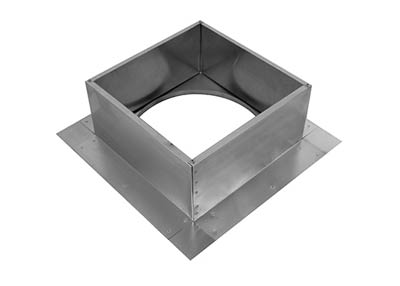

Roof vents provide proper circulation, therefore, making homes energy-efficient. AVP has exhaust vents for both flat roofs and pitched roofs. We carry an array of vent models; for example Aura Gravity Ventilators, Round Back Static Vents, Keepa Attic Vents, Pop Vents and Universal Vents.
All Roof Vents are available with Curb Mount Flanges as well as corresponding roof curbs.
For duct ventilation, we have Round Back Roof Jack Vent Caps for pitched roofs and Keepa Roof Jack Vent Caps for flat roofs. All roof jack vent caps come with a tailpipe adapter for easy installation. All roof jacks are ideal for ventilating bathroom fans and range hoods.
All roof vents are UL certified, Texas Department of Insurance, Florida State Approved and have CAL FIRE. Roof Vents are tested to withstand wind pressure speeds exceeding to 200 mph.

Roof exhaust vents remove heat and moisture from the attic during the summer. In addition to removing moist damp air during the winter. This benefits the attic because it will keep dry insulation. Dry insulation prevents mold and mildew from growing.
In order for roof exhaust vents to work efficiently, they must be near the peak of the roof. This is because hot air rises and will naturally collect near the peak.
There are many roof exhaust vents to choose from, and choosing the right one may seem difficult. After all, not all roofs are the same. This is why AVP offers to assist all customers with their roof vent choices.
All roof vents are customizable. Choose your color, diameter, height, curb mount flange and/or tailpiece adapter for duct systems.
Vents for a flat roof tend to be built differently than vents for a steep roofs. The main difference is the height of the vent. Vents for a flat roof need to be built taller. AVP offers vents for both roof types. For more information on roof exhaust vents for flat roof applications please click on: Aura Vents, Aura Vents with Curb Mount Flanges, Round Back Vents with Curb Mount Flanges, Keepa Vents and Witches Hat Vents.
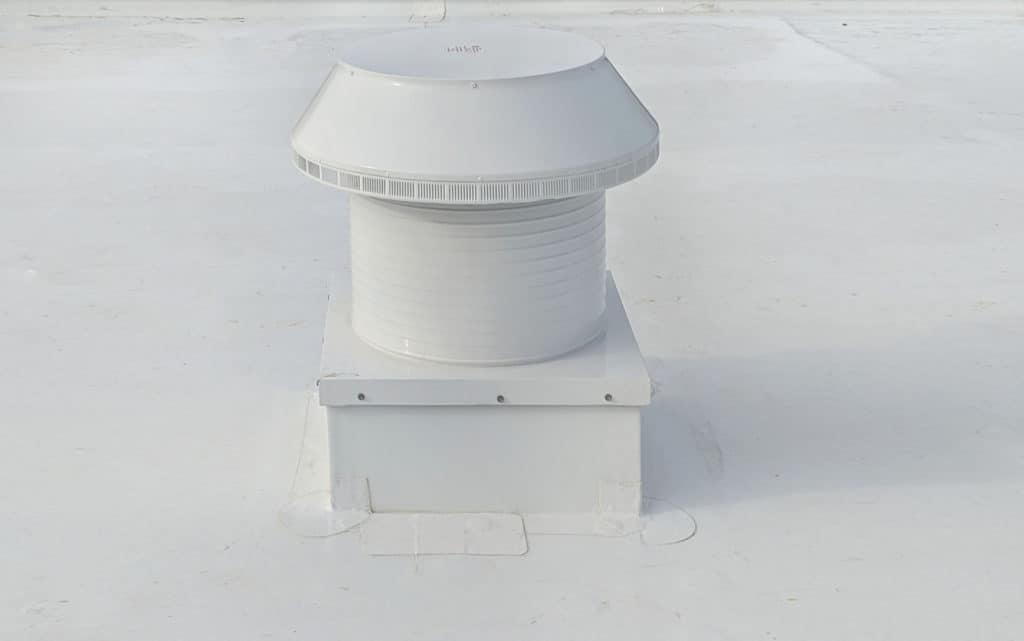
In order to achieve proper attic ventilation, there needs to be a balance between Exhaust and Intake Air. The intake of air will allow the hot humid air to escape through the exhaust vents at the peak. Air intake vents are available for both flat roof and pitched roof ventilation. Roof Vents can also be made with a curb mount flange for installation on roof curbs.
All roof vents are UL certified, Texas Department of Insurance, Florida State Approved and have CAL FIRE. In other words, these vents can withstand wind speeds up to 200mph
Air intake roof vents include Round Back Static Vents, Keepa Attic Vents, Pop Vent, Universal Vents, and Soffit Vents.
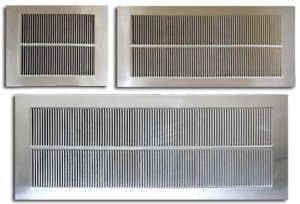
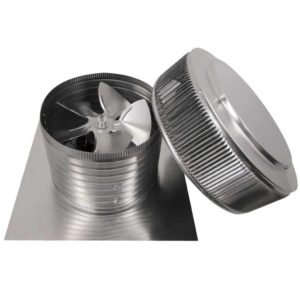
The Aura Attic Fan exhausts air for proper attic ventilation. This fan will exhaust air continuously even when the motor is off. It also works passively because of the Venturi Effect. This occurs when the wind blows against the outer louver to create an upward draft. As a result, allowing air to freely flow in and out. Aura Attic Fans remove hot humid air during the summer and moist damp air during the winter. This not only keeps the insulation dry but will lengthen the life of the roof.
AVP offers exhaust fans with both flat flange and curb mount flange options. In addition to solar fans.
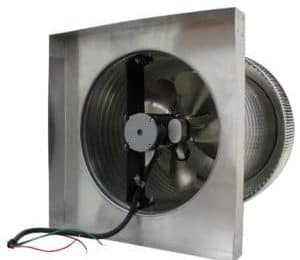
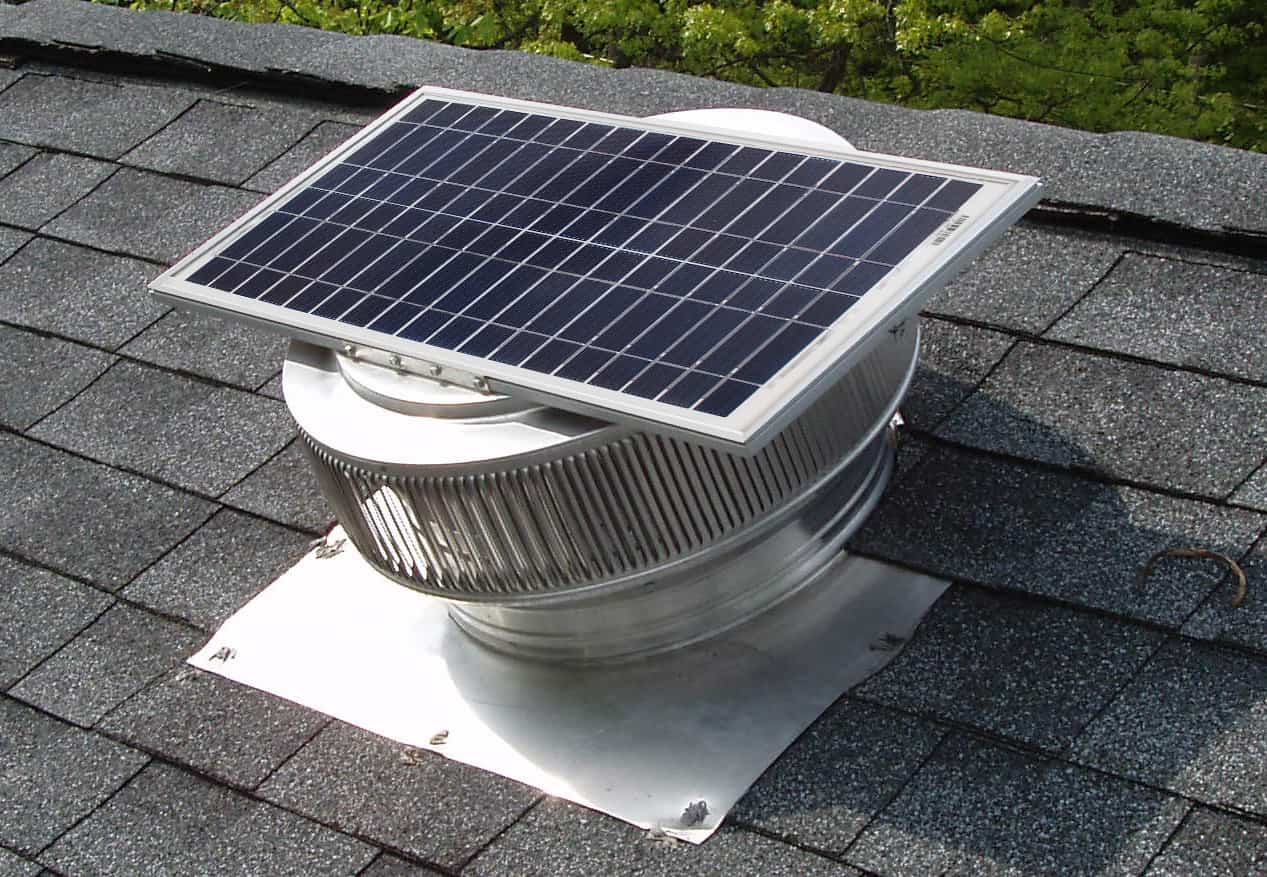
AVP's solar fans are built for installation on pitched roofs, flat roofs and roof curbs. Each line of Solar Fans comes in an array of sizes and collar heights allowing for installation in all climate zones. The solar panels work best in bright direct sunlight. However, it exhausts air continuously even when there is no sun and the motor is off.
These solar fans are designed to remove hot air from the attic in the summer. In addition, they also remove moisture during the winter. As a result, this allows for year-round ventilation. The 1/8 inch louvers are designed to prevent rain, snow, insects and animals from entering inside the fan. The all-aluminum construction allows for a rust-free and durable fan.
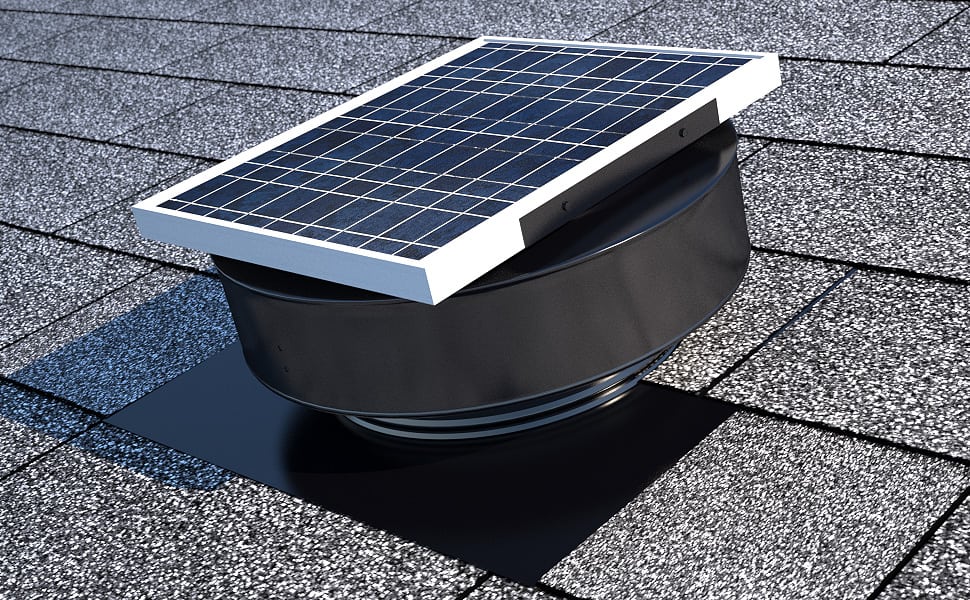
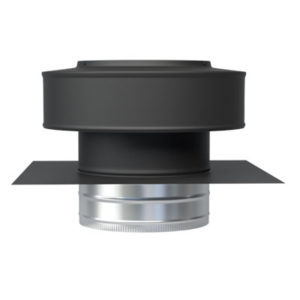
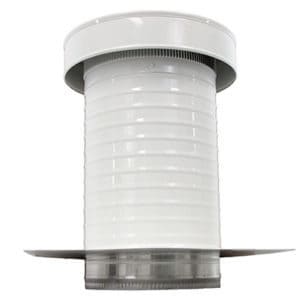
The Round Back Roof Jack Vent Cap is for steep-sloped roofs; while on the other hand, the Keepa Roof Jack Vent Cap is for flat or low sloped roofs. Both roof jack vent caps are ideal for ventilating bathroom fans and range hoods. All roof jacks are made of rust-free aluminum and come with a 2-inch tailpipe.
The inner vertical louvers not only ventilate the duct efficiently but also act as an insect screen. In addition, the round aerodynamic design allows the vent to deflect wind and debris. Both Roof Jacks come in an array of sizes allowing for installation in all climate zones.
Proper ventilation will remove excess heat during the summer and moisture during the winter. As a result, extending the life of the roof and the efficiency of the HVAC systems. In addition, having a balance of exhaust and intake air will keep insulation dry. Having proper roof ventilation is beneficial in all climate zones. For exhaust vents, we recommend our Aura Gravity Ventilators as they come in an array of sizes. For intake air, we have Pop Vents and Soffit Vents to balance your attic ventilation.
Proper ventilation is when you have equal amounts of air exhaust with air intake. Exhaust vents go on the upper portion of the roof, meaning no lower than 2ft from the peak. While on the other hand, air intake must be on the lower end of the roof.
Active Ventilation Product’s line of roof air exhaust and air intake ventilators provide the necessary ventilation functions. Find the most common types of roof vents here.
With over 24 years of experience, we know how to manufacture ventilation. We harness the force of nature to circulate air in your home. The following pages will help to explain the different types of ventilation systems. Each will help explain how to keep your home cool with your type of roof.

This installation had existing wooden roof curbs. The Pop Vent installation was done in just a few minutes right before a major rainstorm. To the left, you can see the Pop Vent. The bottom image shows the inside of the wooden roof curb. To the right is AVP's Aura Gravity Vent which is ideal for exhausting air. In order to have proper ventilation, you will need a balance of intake and exhaust air.

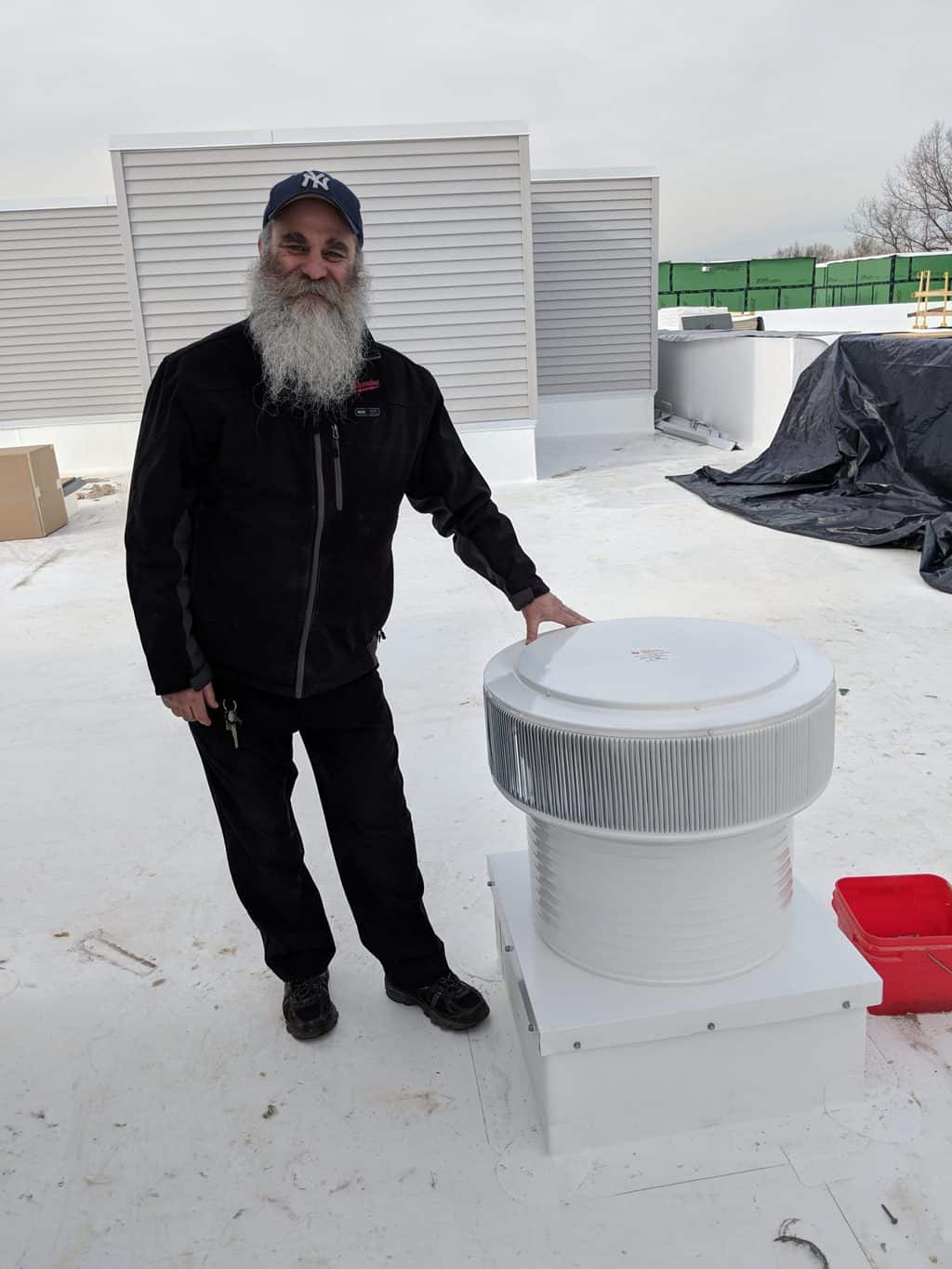
AVP's bathroom soffit vent comes in a 3-inch or 4-inch diameter. It easily attaches to flex or rigid ducts in order to exhaust air from the bathroom fan. The adapter of the soffit vent is beaded which creates a non-slip surface for the duct to fit onto.
The Bathroom Soffit Vent will help to eliminate back pressure so that the bathroom fan can exhaust out hot humid air from the shower as well as unwanted odors from the bathroom.
Placed under the eaves the bathroom soffit vent is connected to the bathroom fan through ductwork. The all-aluminum construction of the soffit vent prevents rust and corrosion. Available in white these soffit vents will match most under eave areas. In addition, the powder coat paint will keep the vent looking new for many years.
The soffit vent louver design like other roof vents from AVP, will prevent rain, snow, insects, and animals from entering inside and will still ventilate more efficiently than insect screen.
For any questions about this product or any of AVP's other products, please email the sales team at [email protected] or call 845-565-7770 for more information.
A pitch pan is a flanged, open-bottom, metal container that wraps around roof penetrations. They are with mastic material to provide a water-tight seal. In other words, a pitch pan is a retrofit roof flashing kit. Also known as a pitch pocket, they function as a container to hold fluid sealant to seal all roof penetrations. They effectively secure odd-shaped penetrations to prevent leaks. Some of these roof penetrations may include electrical conduit, I-beam support, or plumbing.
Pitch pans – pitch pockets are for flashing roof penetrations that would be difficult to flash in any other way. They will work with all roof types such as TPO, PVC, and EPDM. Pitch pans will also work with all HVAC systems to ensure a leak-proof seal. AVP’s pitch pocket will prevent leaks from occurring right at the roof penetration. The open pitch pocket design is ideal for wrapping around electrical conduit, I-beam support, and plumbing. This allows for easy installation while eliminating the risk of leakage.
AVP’s pitch pan shapes also vary from square boxes to rectangular boxes. Square pitch pockets are ideal for containing single penetrations; while on the other hand, the rectangle pitch pockets are made to contain multiple small penetrations close together. As a result, every customer will be able to find a pitch pocket to fit all roofing needs.
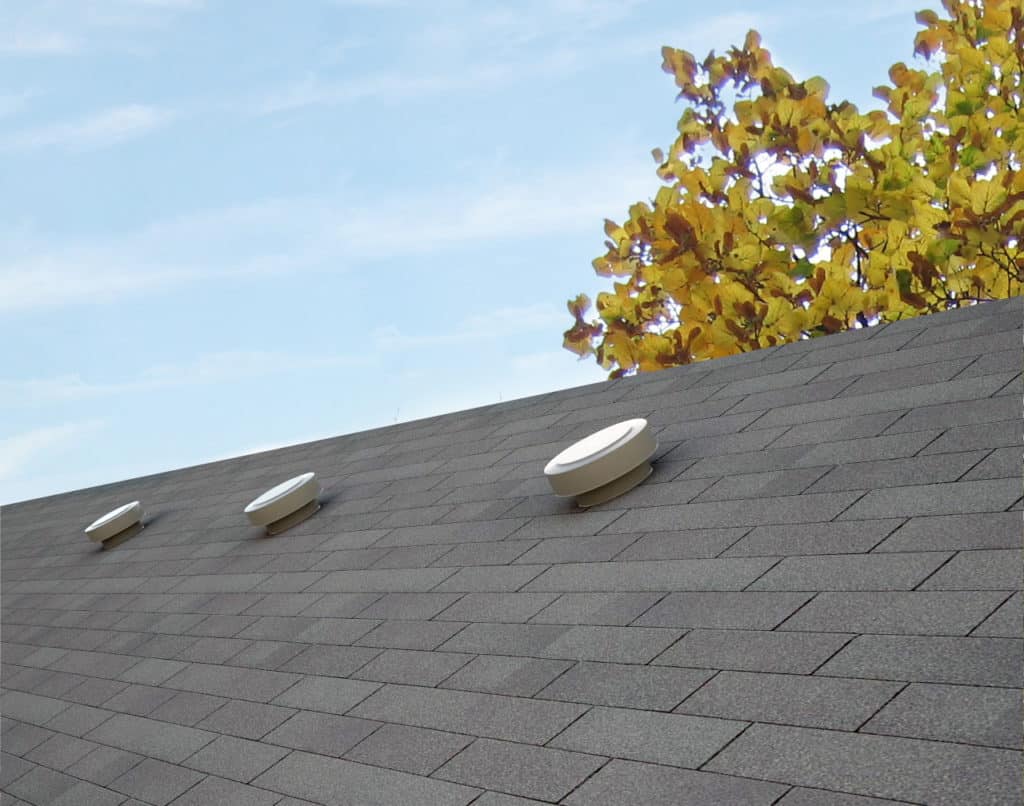
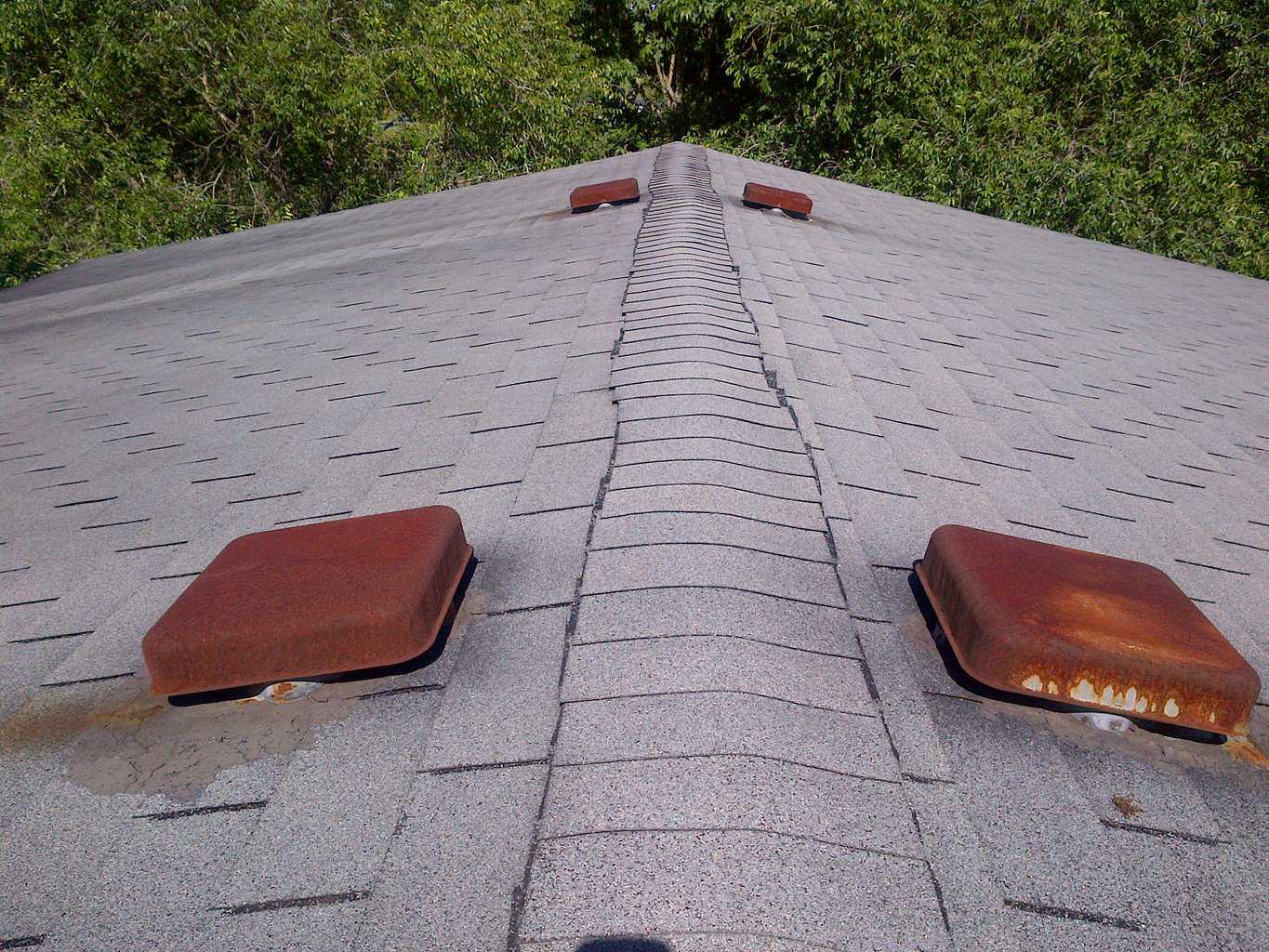
Aluminum roof vents will never rust, even in coastal areas where the air is salty. These roof vents will look the same for several years even if they're not painted. The beauty of your home and its roof will last.
The strength and integrity of these static vents will also last so breakdowns should not occur. Therefore keeping your home dry and safe from the weather.
Galvanized steel roof vents will rust, even if they're painted. The picture above shows galvanized roof vents after a few years. Rusty roof vents can make a beautiful home look run down or old. This problem can affect the resale value of the home.
As the rust worsens, the roof vents can break up under strong winds and let rain, snow or even animals in the attic.
The Pop Vent is more than a roof vent; it's also a cool way to ventilate a really fun art project. Los Angeles-based composer, Chad Fischer, built a replica Apollo 11 Space Capsule in his garage during quarantine. This incredibly beautiful and realistic model is now a playhouse for his daughter.
Chad installed the Pop Vent to ensure that his child played in a safe well-ventilated space. He also knowingly chose The Pop Vent because of its aerodynamic shape; he knew it would make for a great looking installation.
AVP's vents can withstand wind speeds in excess of 200 mph while also keeping out wildlife, insects and rain. As a result, the pop vent will protect the playhouse for years to come.
To the right, you see images of this one-of-a-kind playhouse as well as part of the assembly process.
Proper attic ventilation is important during the winter. Without it, moisture can get trapped in the roofing system which could cause decay of the structure. To achieve proper attic ventilation, you need both exhaust vents and air intake vents. This will remove excess radiant heat and moisture from the attic. Maintaining proper attic temperatures will ultimately lower energy costs.
Every roof should have exhaust vents along the peak and air intake vents towards the bottom. AVP supplies both exhaust vents and soffit vents for under-eave ventilation.
Having roof vents for air intake and air exhaust can alleviate all of these problems. Roof vents are fairly inexpensive but can have a profoundly positive impact on your home or building. For most people, owning a home is the biggest investment they will make. Therefore, venting your home is not only important, but it also makes it a healthier and a more energy efficient place to live.

In May of 2019, AVP’s president, Martin Kolt, began shooting informational roof vent videos. The goal is to help answer frequently asked questions about roof vents. In addition, these videos also support other technicians out in the field. It’s important that Martin shares his knowledge with AVP’s customers. After all, he has been supporting the roof ventilation industry for over 30 years.
At work, Martin and his team engineer better roof vent designs and also find new and innovative ways to help the end-user. He has discovered ways to manufacture vents more efficiently and safely for his team.
When Martin is not working on roof vent designs, he acts as corporate liaison with Underwriters Laboratories (UL), Texas Department of Insurance, and Florida State. Martin and Ethan plan to release more videos later this year. The goal is to create a video library of valuable information that will be easily accessible. Their videos are available for viewing on AVP’s website, Facebook and AVP’s YouTube channel.
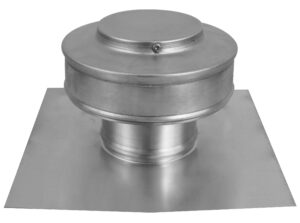
This Round Back Static Roof Vent is 3 inches in diameter and is for a wide variety of applications. Some of which are bathroom fans, plumbing ventilation or range hoods. Shop roof vents at AVP.
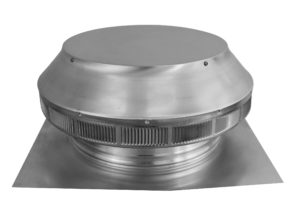
AVP's roof vents vary in size from 3 inches in diameter to 48 inches. While on the other hand, the collar heights range from 1 inch to 12 inches. As a result, ensuring each customer to find a roof vent to fit their home. Some roof types may be EPDM, TPO, PVC, asphalt shingle, cedar shake, slate, or tile. AVP serves the residential, commercial, and industrial roofing sectors.
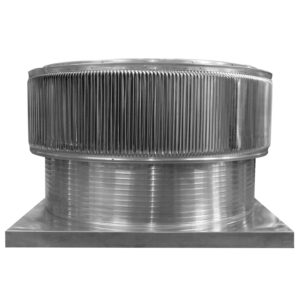
This Aura Gravity Roof Ventilator is 48 inches in diameter. A Roof Vent of this size is for commercial or industrial applications. It is shown here with a curb mount flange to go on top of roof curbs.
Exhaust Roof Vents remove hot air from the attic in the summer and moisture in the winter. Attic Ventilation will extend the life of your roof and can make your home or building more energy efficient. AVP forms roof vents out of heavy gauge aluminum so they can hold up to the toughest weather conditions. Roof Exhaust Vents are manufactured to handle different climate zones. Roof pitch is a factor when deciding which roof vent to purchase.
AVP’s Roof vents have the option of over 40 powder coating colors to choose from. Powder Coating lasts longer than conventional wet paint. How do you powder coat roof vents? First, roof vents get a coating of a special magnetic paint powder. Then the roof vents go into an industrial oven at 400 Degrees Fahrenheit for 15 minutes. The baking process melts the paint powder giving the roof vent a fresh look. Once the roof vent cools, the paint cures and hardens. As a result, this process makes the vents look new for longer than other painting methods.
Need more convincing? See AVP's testimonials to see what customers are saying.
Attic ventilation is important as it can help maintain the health of the building. Removing excess heat in the summer and moisture in the winter will help the life of the roof. As a result, this will also help the functionality and efficiency of the HVAC systems. Flat roofs are anything under a 3/12 pitch. Here at AVP, we design our vents specifically for low slope or flat roofs.
These vents typically have a taller collar and/or come with a curb mount flange for installation on roof curbs. The additional height prevents precipitation from entering inside these static vents. In addition, this will protect the attic from moisture.
This vent can be an air intake vent as well as an air exhaust vent. If it's on the upper portion of the roof, this vent can be used as an exhaust vent. This vent will allow heat and moisture to escape. However, when on the lower end of the roof it can be used as an air intake vent similarly to a soffit vent.
Off-ridge static roof vents are also excellent for ventilating parapet walls because it will allow the buildup of heat and moisture within the wall to escape. Above all, the Universal Vent is ideal for proper attic ventilation.
The 1/8 inch opening between the louvers will keep out precipitation and wildlife while allowing air to move freely. In addition to its functionality, it has a low-profile design. This allows the vent to look pleasing on shingle roofs and parapet walls. Powder coating is available to match the color of your roof or wall.
These vents are UL listed, and meet the standards of the Texas Department of Insurance, Florida State and have CAL FIRE approval. Need more convincing? See AVP's testimonials to see what customers are saying.
In order to exhaust air, you need a fresh air intake. Roof Louvers and Static Vents that intake fresh air to the attic allow exhaust vents to work efficiently. This pressurizes the space so that there is air available to flush out. As a result, excess heat can escape through the exhaust vents. All commercial air intake roof vents have a vertical height requirement for flat roof ventilation.
As a result, AVP's vents can also be made with a curb mount flange. Curb mount flanges are only necessary if going onto roof curbs. Roof vents can be made to connect to a duct with a tailpiece adapter if connecting to a duct system. Above all, AVP's roof vents have an aluminum construction; therefore they will not rust.

AVP's Intake Soffit Vents made are with a Multi Louver Design for optimal fresh air intake.
They are essential for proper attic ventilation. In order to exhaust heat from your roof, you need a soffit vent to bring in the cool dry air. The Under Eave Vent is an air intake roof vent. To clarify, Soffit Vents are roof vents that go underneath the eaves of a roof that extend the warm wall line. When properly combined with other roof ventilation devices, soffit vents allow fresh air to enter into an attic to create proper airflow.
At first, it may seem odd to add insulation for warmth then purposely allow cold air to enter the attic through soffit vents. On the contrary, attic ventilation is the key to an energy-efficient home.
As a result, this prevents mold from growing and keeps the insulation dry. In addition to intake air, you will also need to exhaust out the stale air from the attic. See our Exhaust Vents to complete your attic ventilation.
Above all, AVP's all-aluminum Under Eave Vents are corrosion-resistant and easy to install. All vents are available in a wide variety of colors. The 1/8 inch louvers will prevent rain, snow, insects, and animals from entering inside the vent. As a result, allowing the air to move through the vent without resistance.

Roof Jack Vent Caps for duct ventilation. Allows air to exhaust out without rain, snow, or insects from getting into your home.
The Round Back Roof Jack Vent Cap is for pitched or steep-sloped roofs while the Keepa Roof Jack Vent Cap is for flat or low sloped roofs. Both roof jack vent caps are ideal for ventilating bathroom fans and range hoods. The Roof Jack’s tailpipe is 2 inches long and will fit existing ductwork. As a result, allowing for a quick and easy installation. The inner vertical louvers of the roof jack vent caps not only ventilate your duct effectively but also act as an insect screen. Additionally, having a round design makes the roof jack vent caps aerodynamic; this allows them to deflect wind and objects carried by the wind.
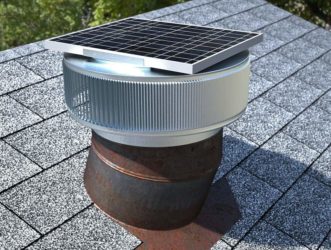
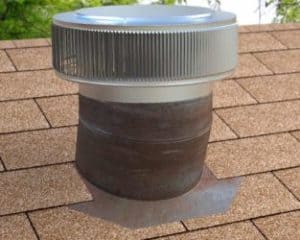
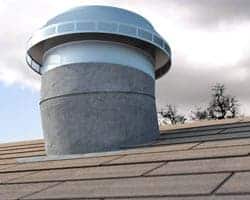
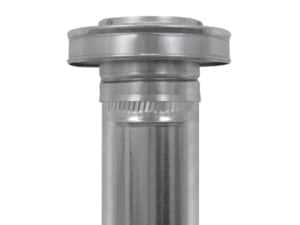
It’s a great time to replace your old, noisy roof turbines with one of our roof vents, solar attic fans, or vent pipe caps. AVP's roof vents remove excess heat and moisture from the attic or exhaust pipe. All roof vents and accessories operate silently. As an extra upgrade, have your roof vents match the color of your roof or pipe. Need more convincing? See AVP's testimonials to see what customers are saying.
All PVC Vent Caps and Solar Fans can be for both commercial and residential applications. Exhaust caps and solar fans are remarkable for eliminating heat and moisture. While on the other hand, the passive air intake caps allow for fresh air to enter the PVC Pipe. They will continually exhaust air with no moving parts while preventing rain and snow from entering. Additionally, the vertical louvers keep out insects and animals allowing for optimal airflow. To add to to that, the round design is aerodynamic to withstand wind speeds up to 200 mph.
AVP offers quality attic exhaust fans that provide airflow for optimal ventilation. The fans remove hot humid air during the summer and moist damp air during the winter. As a result, this not only keeps the insulation dry but will lengthen the life of the roof. All fans have vertical louvers that prevent rain and snow from entering. In addition, these louvers also keep out insects and animals. As a result, this keeps the fan clean which allows maximum air exhaustion without resistance. Additionally, this fan has a removable top which makes it easy for maintenance on the unit. The curb mount flange is only for installation on roof curbs.
The Round Back Solar Fan uses sun light to power it's fan. The strong fan efficiently removes hot attic air all day long. The Round Back Solar Fan also exhausts air continuously even when there is no sun which is during cloudy days and evenings. Like a static vent, it works passively because of the Stack Effect, which occurs when hot air rises it speeds up and flows freely out of the attic.
This exhaust fan works best if it's near the peak of the roof and in direct sun light. It removes hot humid air during the summer and moisture in the winter. See the Climate Zone Chart to determine the proper collar height for installation in your area.
The Aura Solar Fan uses both solar and wind to power the ventilator. It exhausts air continuously even when there is no sun and the motor is off. It works passively because of the Venturi Effect. When the wind blows against the outer louvers this creates an upward draft which allows air to freely flow in and out of the vent.
The 1/8 inch louvers will prevent rain, snow, insects and animals from entering inside the fan.
This Solar Fan comes in an array of diameters and collar heights allowing for installation in any climate zone. See the Climate Zone Chart to determine the proper collar height for installation in your area. See AVP's roof curbs to find one to fit your AVP attic fan.
The goal of roof ventilation is to provide a means of allowing outside air to enter and exit attics and ventilated spaces, so that heat and moisture can leave the building envelope.
A roof vent is an engineered structure that is typically rigid and has two primary functions. First, to allow air to travel through it. And second, to prevent insects, precipitation and any wind-blown debris from passing through it.
Roof vents are for the purpose of air intake and air exhaust. Having vents of both types is a requirement by IBC International Building Code for steep slope roofs.
Air intake vents are used to allow outside air to enter into attics. Intake vents should be located low on the roof, or along the lowest eave or soffit of the roof assembly. Intake vents are best when used in conjunction with roof exhaust vents.
(Source: NRCA)
Another way to avoid an obstruction is to install baffles. Baffles go between rafters keeping insulation from blocking air from the soffit vent below. original image
Above all, intake vents will complete attic ventilation; In addition to preventing precipitation, animals and insects from entering the attic space.
NRCA does not recommend the use of drip edge vents as intake vents in northern climates where there is a likelihood of ice damming.
(Source: NRCA)
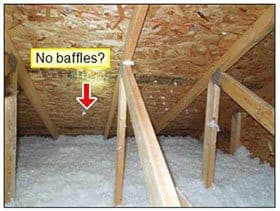
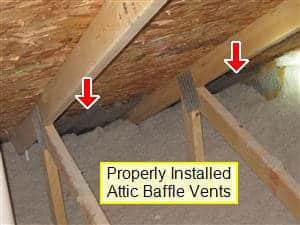
Proper roof ventilation consists of air intake at low points and air exhaust on the high points of the roof. This design system works off of nature’s thermal dynamic, a process called Diurnal Convection. original image
(Source: ResearchGate)
Below are some common types of roof exhaust vents:
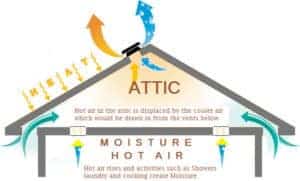
AVP's Static Vents are roof vents that do not have moving parts. Therefore, they can be an exhaust vent as well as an intake vent. This will depend on the placement of the vent upon the roof. If the vent is on the upper portion of the roof, it will be an exhaust vent. While on the other hand, if it's on the lower portion of the roof, it would then be an intake vent. AVP's most popular static vents are the gravity vents and the round back vents. Below are pictures of common static roof vents also called passive roof vents and gravity roof vents. original image
Turbine vents rely on wind to rotate the turbine’s fan blades. The spinning of the blades rotate to keep out rain and snow, not to expedite the ventilation capacity as many people believe. (Source: NRCA)
The typical whirlybird turbine vent will rust and stop working overtime. While on the other hand, our gravity vents continuously work without any moving parts.
Read our article comparing the typical turbine vent to our Aura Ventilator!
